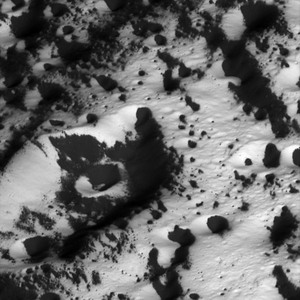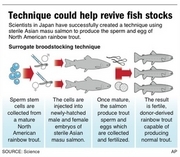Scientists on the Cassini mission to Saturn are poring through hundreds of images returned from the Sept. 10 flyby of Saturn's two-toned moon Iapetus. Pictures returned late Tuesday and early Wednesday show the moon's yin and yang--a white hemisphere resembling snow, and the other as black as tar.
Images show a surface that is heavily cratered, along with the mountain ridge that runs along the moon's equator. Many of the close-up observations focused on studying the strange 20-kilometer high (12 mile) mountain ridge that gives the moon a walnut-shaped appearance.

|
| ©NASA/JPL/Space Science Institute
|
| Cassini surveys a bright landscape coated by dark material on Iapetus. This image shows terrain in the transition region between the moon's dark leading hemisphere and its bright trailing hemisphere.
|

